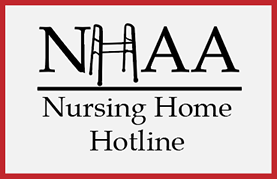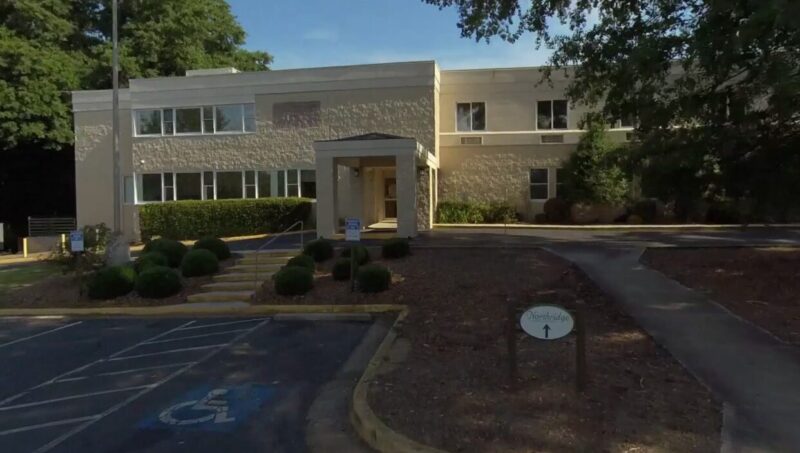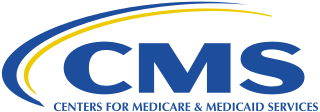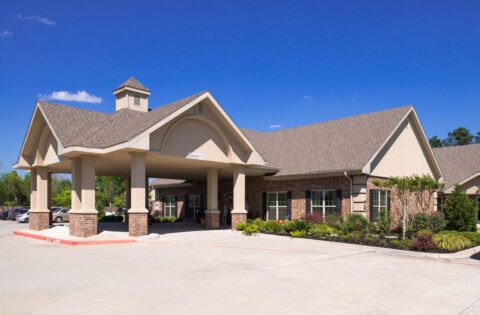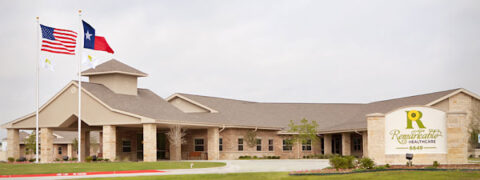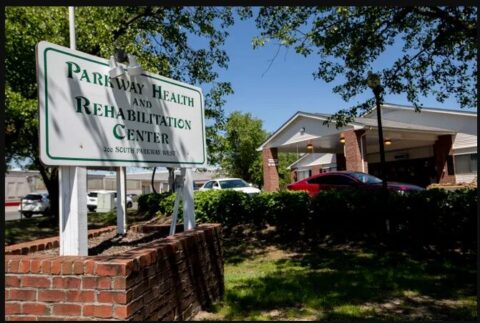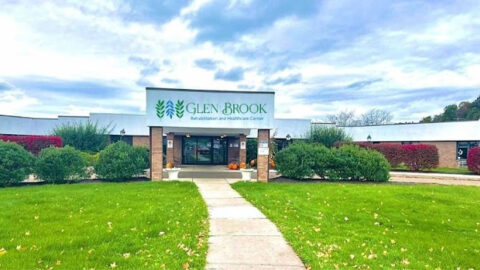State Findings:
Based on observations, record reviews, interviews, and review of the facility policy, Fall Management, the facility failed to ensure that falls were thoroughly investigated, and appropriate interventions were put into place to prevent falls for two residents, Resident (R) #48 and R#78, of five residents reviewed for falls.
Findings include:
A review of the facility policy titled, Fall Management, revealed, Each patient is assisted in
attaining/maintaining his or her highest practicable level of function. Each patient’s risk for falls is evaluated by the interdisciplinary team (IDT). A care plan is developed and implemented based on this evaluation with ongoing review. If a fall occurs, the interdisciplinary team conducts an evaluation to ensure appropriate measures are in place to minimize the risk of future falls. When a fall occurs: Review the event and patient status at the next scheduled PAR (Patient at Risk) or UR meeting as indicated.
1. A review of the Face Sheet revealed the facility admitted R#74 on 2/3/21. Diagnoses included, but were not limited to, pain in right hip, pain in left hip, unspecified dementia, displace fracture of base of neck of right femur, osteoarthritis, and cervical disc disorder (CDD). A review of the quarterly Minimum Data Set (MDS) for R#74, dated 2/26/22, revealed a Brief Interview for Mental Status (BIMS) score of 3, indicating severely impaired cognition. Further review of the MDS revealed R#74 required extensive assistance of one staff for ambulation and transferring and utilized a wheelchair and a walker as a mobility device. Further review of the MDS revealed R#74 sustained two or more falls with injury since the prior MDS, which was dated 12/3/21.
A review of the Care Plan, updated 3/25/22, revealed the resident was at risk for falls related to poor safety awareness and dementia. Interventions in place for fall prevention included, but were not limited to, winged mattress, non-skid tape next to the bed, and anti-roll backs on the wheelchair.
A review of the Electronic Health Record (EHR) indicated R#74 sustained falls on 1/18/22, 2/15/22, and 3/24/22.
A review of the Event notes for a fall which occurred on 1/18/22 indicated R#74 was ambulating unassisted in the hallway. Injuries included a skin tear to the right wrist and a wound to the forehead. Interventions put into place immediately included to keep the resident in full observation. A review of the Patient at Risk (PAR) investigation revealed the new recommendations for the care plan interventions included providing activity.
A review of the Event notes for a fall which occurred on 2/15/22 indicated R#74 was found on the floor next to the bed with pillows under their head. The immediate intervention added after the event was to add a fall mat to the right side of the bed and the left side of the bed. A review of the PAR investigation revealed the new recommendations for the care plan included a winged mattress.
A review of the Event notes for a fall which occurred on 3/24/22 indicated R#74 tried to get up from the wheelchair and slid down to the floor. This incident occurred in the resident’s room. There was pain to the right leg. A follow-up x-ray indicated a fracture of the right hip. The resident was transported to the hospital for surgical repair. The immediate intervention added after the event was to add a fall mat to the right side of the bed. This intervention was added as a short-term intervention after the fall on 2/15/22. A review of the PAR investigation revealed the new recommendations for the care plan interventions included adding nonskid tape to the floor near the bed. The document also indicated the response to previous interventions
had been good.
Observation on 4/7/22 at 8:25 a.m., R#74 was in a wheelchair in the hallway outside their room.
There were no nonskid strips on the floor next to the bed.
During an interview on 4/7/22 at 8:06 a.m., Certified Nursing Assistant (CNA) TT revealed that the staff becomes aware of what interventions were needed for fall prevention for residents based on the handheld Point of Care (POC).
During an interview on 4/7/22 at 8:17 a.m., LPN XX stated the CNA’s were told about interventions in place for residents on fall precautions through in-services and education. She stated fall mats, non-skid socks, call lights, and close monitoring were in place for R#74.
During an interview on 4/7/22 at 8:20 a.m., CNA VV confirmed the handheld POC showed the staff what interventions were in place for fall prevention. At 8:23 a.m., she stated there were no extra interventions for safety for R#74.
During an interview on 4/7/22 at 8:28 a.m., with CNA TT, was asked what interventions were in place to prevent falls for R#74. She stated a low bed and to check frequently.
During an interview on 4/7/22 at 10:34 a.m., with the Director of Nursing (DON), she stated the CNAs received a verbal report and would know what fall precautions were in place for residents through that report. When asked how interventions were put into the POC system, the DON stated they were not sure. She confirmed there were no nonskid strips on the floor on either side of the bed for R#74. She also stated each fall event was talked about in the PAR meeting where care plans were updated, and a root cause analysis was completed. The interventions were added to the care plan at that time.
During an interview on 4/7/22 at 10:34 a.m., the Assistant Director of Nursing (ADON) stated they conducted huddle meetings with staff whenever the interventions changed. The POC information had to be entered manually, as not all interventions from the care plans moved over to the POC if it was outside the scope of practice for CNAs. When asked who entered information manually into the POC, the ADON stated management team members put information in.
During an interview on 4/8/22 at 11:33 a.m., the DON revealed that expectations included care plans being updated regularly and should be resident centered. The goal was to provide great care and the DON stated interventions should be in place. She then stated communication to the CNA’s and education was essential in providing good care. She also stated the expectation of fall prevention was to find the root cause of falls to prevent further falls. When asked if they thought the current fall risk program was adequate, the DON stated that the facility tried our best to ensure the safety of our patients.
During an interview on 4/8/22 at 11:53 a.m., MDS Nurse UU confirmed the care plans were not updated accurately after falls for R#74. The fall mat intervention was not initiated on the care plan.
During an interview on 4/8/22 at 1:24 p.m., the Administrator revealed that the nursing and facility leadership were responsible for the fall risk prevention. The Administrator stated they were not aware of how information was communicated to the CNA’s regarding interventions put in place by the PAR team. The Administrator stated the expectation of the facility regarding falls and resident safety was to limit falls.
2. A review of the Face Sheet for R#48 revealed the facility admitted the resident with diagnoses that included, but were not limited to, Alzheimer’s disease, history of falling, epilepsy, restlessness, and agitation, unsteady on feet, (CDD) cervical disc disorder, and tremor. A review of the quarterly MDS for R#48, dated 2/10/22, revealed a Brief Interview for Mental Status (BIMS) score of 8, indicating moderately impaired cognition. Further review of the MDS revealed R#48 required extensive assistance of one staff for ambulation and utilized a wheelchair as a mobility device. The MDS also indicated R#48 sustained two or more falls without injury and one fall with injury since the prior MDS, which was dated 11/17/21.
A review of the Care Plan, updated 1/10/22, revealed the resident was at risk for falls related to poor safety awareness, tremors, impulsive behavior, blindness, unsteady gait, and impaired cognitive status.
Interventions in place for fall prevention included, but were not limited to, a mat at the bedside (implemented 12/7/21), wheelchair within reach when in the bathroom (implemented 12/06/2021), bed in low position (implemented 9/22/21), anti-roll backs on wheelchair (implemented 12/22/21), dycem (material to help keep cushion in wheelchair seat in place; implemented 10/01/19), and to keep the resident near the nurse’s station
(implemented 12/28/21).
A review of the EHR indicated R#48 sustained falls on 12/05/21, 12/7/21, 12/21/21, 1/4/22, 1/8/22, 1/15/22 and 1/18/22.
A review of the Event notes for a fall which occurred on 12/5/21 indicated R#48 decided to sit on the floor while ambulating to the bathroom. There was no injury. The immediate intervention added after the event was to maintain the wheelchair in reach of the resident. A review of the PAR investigation revealed the new recommendations for the care plan interventions included maintain the wheelchair in reach.
A review of the Event notes for a fall which occurred on 12/7/21 indicated R#48 was found sitting next to their bed on the floor. The report indicated there was an injury, a skin tear to the left arm.
The skin tear received treatment at the facility. The immediate interventions added included bed in low position, call light in reach, mat at bedside, offer snacks, and redirect. There was no PAR investigation for this fall provided.
A review of the Event notes for a fall which occurred on 12/21/21 indicated R#48 was found at the nurse’s station on the floor in front of their wheelchair. There was no injury. The intervention added at the time of the incident included encouraging the patient to call for assistance and implement a toileting schedule. A review of the PAR investigation revealed the new recommendations for the care plan interventions included adding anti-tip bars to the wheelchair (bars added to the front or back of the wheels of the wheelchair that prevent the chair from tipping backwards) and medication review.
A review of the Event notes for a fall which occurred on 1/4/22 indicated R#48 was found sitting in the hallway in the wheelchair. The resident stood and bent down to pick up something off the floor and tripped over the wheel of the wheelchair. There was no injury. The intervention added at the time of the incident included other. A review of the PAR investigation revealed the new recommendations for the care plan interventions included to verbally explain surroundings to the resident and assist the resident to the chair.
The document also indicated the response to previous interventions had been good.
A review of the Event notes for a fall which occurred on 1/8/22 indicated R#48 got up unassisted and walked to the roommate’s bed and fell . There was no injury. The intervention added at the time of the incident included to place the resident in open area for maximum observation opportunities. There was no PAR review for this fall.
A review of the Event notes for a fall which occurred on 1/15/22 indicated R#48 ambulated to the bathroom unassisted and fell . The staff assisted the resident into a wheelchair and brought R#48 to the nurse’s station for observation. There was no injury. The intervention added at the time of the incident included to place the resident in open area for maximum observation opportunities.
This was also the intervention added after the 1/8/22 fall. There was no PAR review for this fall.
A review of the Event notes for a fall which occurred on 1/18/22 indicated R#48 ambulated to the bathroom unassisted and fell . There was no injury. The intervention added at the time of the incident included bed in low position, call light in reach, and declutter room. A review of the PAR investigation revealed the new interventions included assess needs, take the resident to the bathroom, assist the resident to the wheelchair, and winged mattress (mattress with built up edges to help prevent falls). The document also indicated the response to previous interventions had been good.
Observation on 4/5/22 at 10:51 a.m. R#48 was sitting in the room in a wheelchair, looking out the window. There was no call light in reach, as the wheelchair was at least five feet from the bed. There was a fall mat by the bed.
Observation on 4/6/22 at 11:33 a.m. revealed R#48 was in bed with the bed in low position, and there was no fall mat next to the bed.
Observation on 4/7/22 at 8:02 a.m., R#48 was sitting in a wheelchair in the hallway, with a breakfast tray in front of the resident on an overbed table. There were no anti-tip bars on the wheelchair.
During an interview on 4/7/22 at 8:06 a.m., CNA TT stated the staff becomes aware of what interventions were needed for fall prevention for residents based on the handheld POC.
During an interview on 4/7/22 at 8:17 a.m., LPN XX revealed that the CNAs were told about interventions in place for residents on fall precautions through in-services and education. LPN XX stated fall mats, non-skid socks, call lights, and close monitoring were in place for R#48.
During an interview on 4/7/22 at 8:20 a.m., CNA VV confirmed the handheld POC showed the staff what interventions were in place for fall prevention.
During an interview on 4/7/22 at 8:28 a.m., CNA TT was asked what interventions were in place to prevent falls for R#48. She stated a fall mat and low bed were the interventions for R#48.
During interview on 4/7/22 at 8:47 a.m., CNA VV revealed the resident was to have a fall mat and confirmed that interventions along with anti-tip bars and low bed were not on the POC.
During an interview on 4/7/22 at 9:27 a.m., MDS Nurse UU stated she had worked at the facility as the MDS nurse for nine years. She confirmed there were no anti-tip bars on the wheelchair for R#48. When asked how the information and interventions from the care plans were transmitted to the POC, MDS Nurse UU stated they did not know. She also stated when residents were moved from different rooms or different units, sometimes things get missed.
During an interview on 4/7/22 at 10:34 a.m., the DON revealed the CNA’s received verbal reports and would know what fall precautions were in place for residents through that report. When asked how interventions were put into the POC system, the DON stated they were not sure. She confirmed there were no anti-tip bars on the wheelchair for R#48. She also stated each fall event was talked about in the PAR meeting where care plans were updated, and a root cause analysis was completed. The interventions were added to the care plan at that time.
During an interview on 4/7/22 at 10:34 a.m., ADON stated they conducted huddle meetings with staff whenever the interventions changed. The POC information had to be entered manually, as not all interventions from the care plans moved over to the POC if it was outside the scope of practice for CNA’s. When asked who entered information manually into the POC, the ADON stated management team members put information in. The ADON also confirmed there was no dycem in the wheelchair and no anti-tip bars on the wheelchair for R#48.
During an interview on 4/8/22 at 11:53 a.m., the MDS Nurse UU confirmed the care plans were not updated accurately after falls for R#48. She also stated the interventions were sometimes duplicated and some were not resident-centered. When asked why there were no PARs for falls occurring on 12/7/21, 1/8/22, and 1/15/22 for R#48, MDS UU stated she did not know. When asked if they thought the interventions in place for R#48 regarding falls were appropriate and resident-centered, she stated no.
Your Experience Matters
...and we want to hear it.
NHAA is here to assist families, residents, and the community by sounding the alarm on issues like those found above. This nursing home and many others across the country are cited for abuse and neglect.
If you have or had a loved one living in this nursing home or any other nursing home where you suspect any form of abuse or neglect, contact us immediately.
We have helped many already and we can help you and your loved one as well by filing a state complaint, hiring a specialized nursing home attorney or helping you find a more suitable location for your loved one.
You can make a difference, even if your loved one has already passed away.
Please give us a call at 1-800-645-5262 or fill out our form detailing your experience.
Personal Note from NHA-Advocates
NHAA shares with all the families of loved ones who are confined to nursing homes the pain and anguish of putting them in the care of someone else. We expect our loved ones to be treated with dignity and honor in the homes we place them. We cannot emphasize enough to family members of nursing home residents; frequent visits are essential to our loved ones’ well-being and safety.
If you are struggling and upset, click here to understand your options, or contact us through our contact form or call our toll free hot line number: 1-800-645-5262.
